
10 English Garden Ideas to Add Timeless Beauty Outdoors
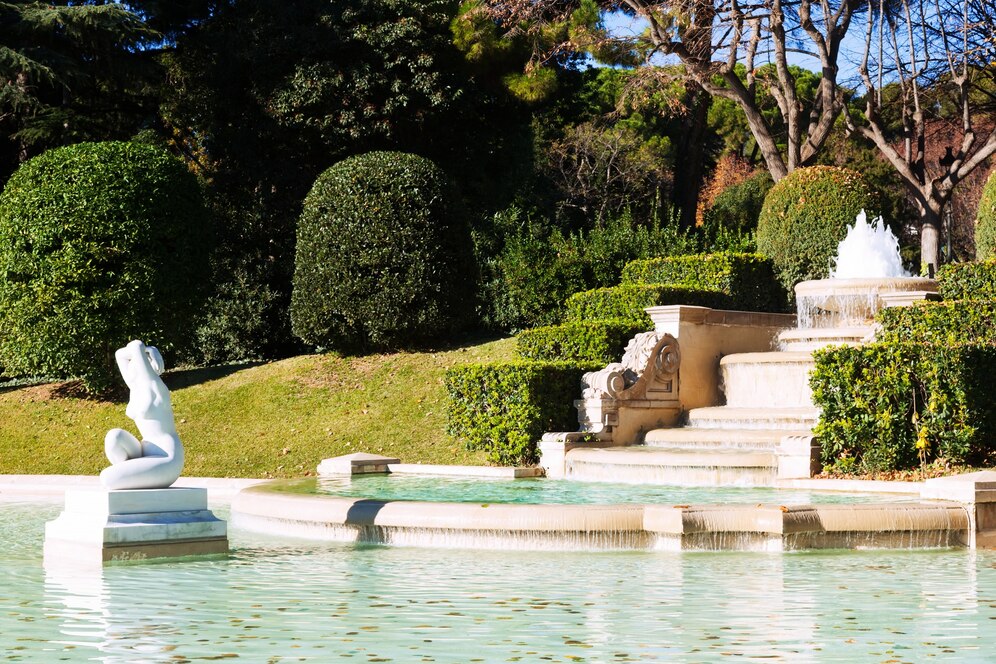
Neatly trimmed hedges. Stone paths between flower beds. Roses climbing old brick walls. An English garden feels calm, graceful, and full of charm. It mixes order with beauty. Flowers bloom in rows, while tall trees and trimmed shrubs shape the space.
Each part feels cared for. Small details matter. A bench under a tree. A fountain in the center. A border of lavender beside a gravel path. These gardens bring quiet joy, perfect for both large yards and small spaces.
English gardens often use structure. Hedges, gates, and paths guide the eye. Soft colors like white, pink, and green create balance. Everything feels planned, but still alive and changing with the seasons.
This list shares ten simple ideas to build your own English-style garden. You don’t need a castle or fancy tools. Just a bit of space, the right plants, and a love for nature’s calm order.
10 English Garden Ideas for Classic Beauty and Peace
English gardens bring a peaceful, timeless feeling to outdoor spaces. They mix neat structure with soft, blooming flowers. Paths wind through rows of hedges. Roses climb old walls. Every detail feels calm and full of grace.
This style works in large backyards or small city plots. It adds charm without needing too much space. The focus stays on balance. Flowers bloom in soft colors. Hedges stand in neat lines. A bench sits under a tree. A fountain splashes nearby.
These ten ideas help create your own English garden. Start small. Use what you have. Add one thing at a time. Soon, you’ll have a place that feels like a quiet escape from busy life.
1. Use Formal Hedges

Neatly trimmed hedges give structure. Use boxwood, yew, or privet. Shape them into squares, circles, or simple walls. Place them along paths or around flower beds.
Hedges divide space. They also guide the eye. You can use them to build rooms in your garden. Keep them trimmed to stay neat.
2. Build Gravel or Stone Paths
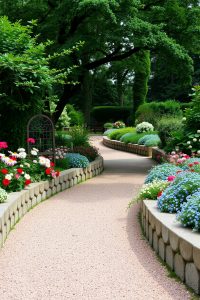
Soft-colored gravel or old stone makes perfect paths. Lay them between flower beds or across lawns. Curved paths look more natural.
Paths guide movement. They also break up space. Small details like brick edges or grass between stones add charm.
3. Add a Central Fountain
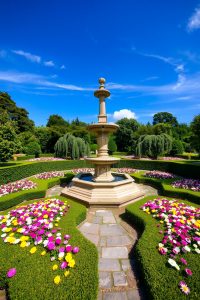
A fountain adds calm sound and a clear center point. Choose a stone bowl, a tall spout, or a tiered piece. Place it where paths meet or in the middle of a flower circle.
The sound of water helps bring peace. It also attracts birds and adds life to the space.
4. Plant Climbing Roses

Climbing roses bring color and height. Let them grow on fences, arches, or walls. Choose soft pink, white, or red types.
Train them with wires or wooden frames. Let them grow full and thick. Prune once a year to help new growth.
5. Add a Classic Garden Bench
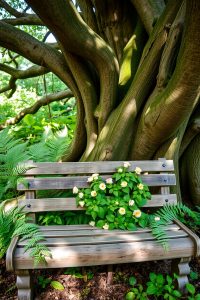
Place a bench in a quiet corner. Use wood, stone, or cast iron. Tuck it under a tree, beside a wall, or near a fountain.
This gives you a place to rest. You can read, sip tea, or enjoy the view. A bench makes the space feel lived in.
6. Grow Soft-Colored Flowers

Use white, pink, purple, and blue. These colors calm the eye. Plant lavender, delphinium, foxglove, daisies, and phlox.
Mix tall and short flowers. Let them grow close. Avoid perfect rows. Let them lean and mix for a natural look.
7. Build a Garden Arch or Trellis

Arches and trellises add height and style. Place one over a path or gate. Grow vines or roses on them.
Wood or metal both work. Paint white for a classic look. Let the plants grow thick for shade and beauty.
8. Add a Walled Garden Space
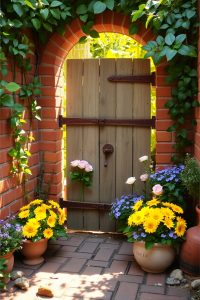
A low wall creates a private space. Use brick or stone. Fill the inside with flowers, herbs, or a small tree.
This gives the garden a “room” feeling. It also protects plants from wind. Add a gate for charm.
9. Grow Hedges in Geometric Shapes
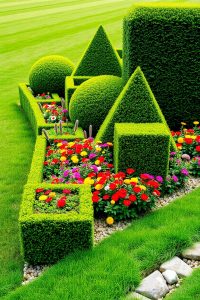
Cut hedges into round balls, tall cones, or square boxes. These shapes bring order. Place them at corners or in a row.
Topiary work takes time, but looks stunning. Even simple shapes add charm. Use hand clippers for better control.
10. Use Antique or Rustic Decor
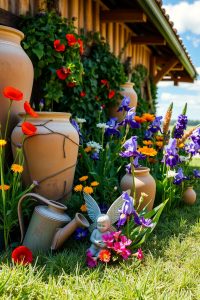
Add charm with old items. Use clay pots, wooden ladders, or stone statues. Hang a watering can. Set a lantern near a bench.
These items bring history to the garden. They tell a quiet story. Keep it simple and natural.
FAQs
What makes an English garden different?
It mixes neat shapes with wild flowers. It uses soft colors, quiet paths, and peaceful seating areas.
Do I need a large yard for an English garden?
No. Small spaces work well. Use walls, pots, and tiny paths.
What flowers grow best in this style?
Roses, lavender, foxglove, daisies, peonies, and phlox.
Can I add vegetables?
Yes. Herbs and small vegetables like lettuce or carrots can grow in flower beds or pots.
How often should I trim hedges?
Trim two or three times each year to keep the shape clean.
Conclusion
English gardens feel calm, full, and alive. They bring soft beauty to any space. Paths, benches, and flowers all work together. Every corner has charm.
Start with a few flowers. Add a path or bench. Place a small fountain or some clay pots. Let plants grow slow and full. Trim the edges. Shape the hedges. Let the flowers bloom as they please.
A well-loved garden grows over time. It changes with the seasons. It welcomes birds, bees, and people. Each visit feels like a walk through a peaceful story.
Let your garden grow. Let it speak quietly. And let it bring joy every day.
